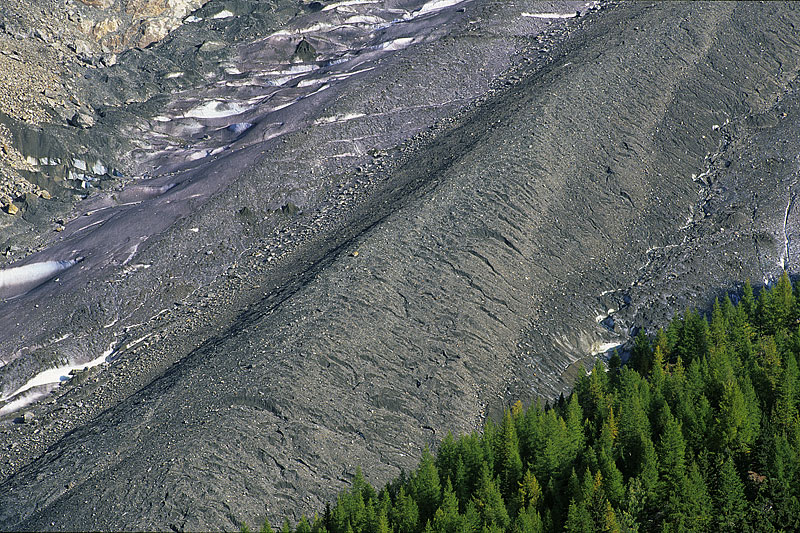 Presently the glacier tongue ends at about 1600 m.a.s.l, about 500 metres lower than the local treeline. Note some violett-coloured ice, top left, due to weathering products from cristaline rocks (September 2005). | 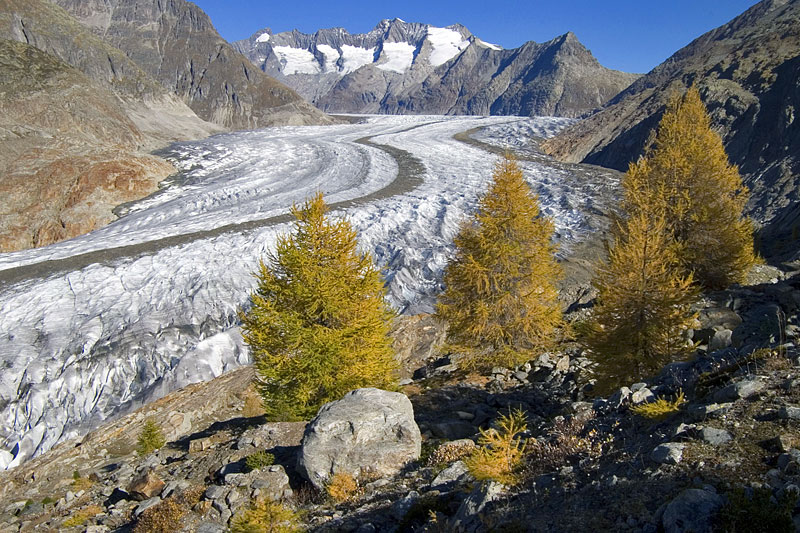 After the first severe frosts of autumn larches turn yellow. This is probably the best time to visit Grosser Aletschgletscher (October 2006). | 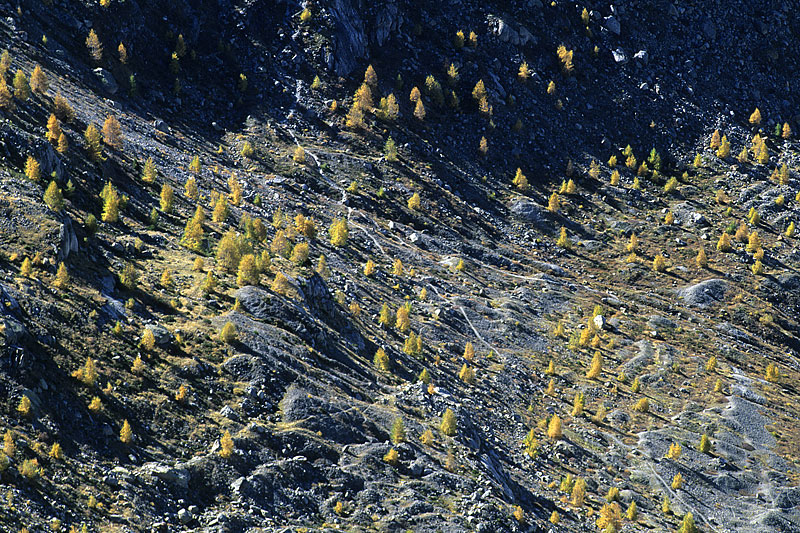 The same area as in the previous image, but seen from a greater distance. Between the yellow larches numerous annual moraines can be seen (October 2006). | 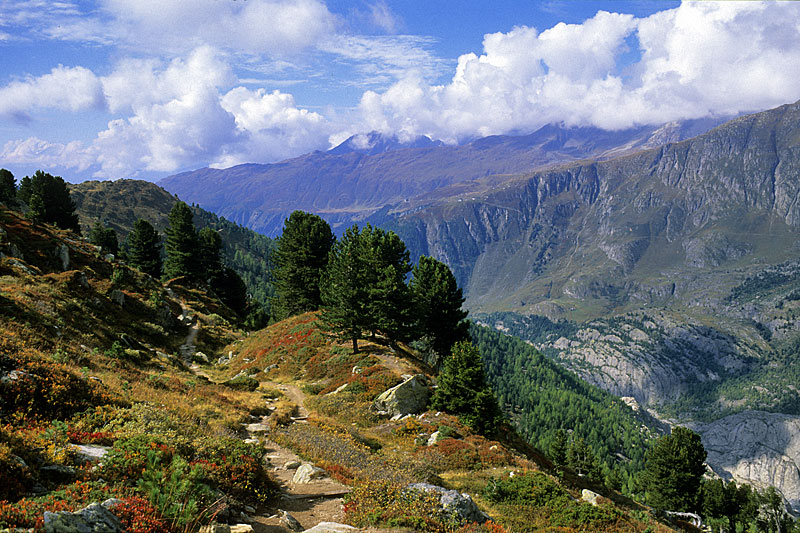 On this late glacial moraine several great specimens of the Swiss Pine or Arolla Pine (Pinus cembra) are growing (September 2005, looking towards SW). |
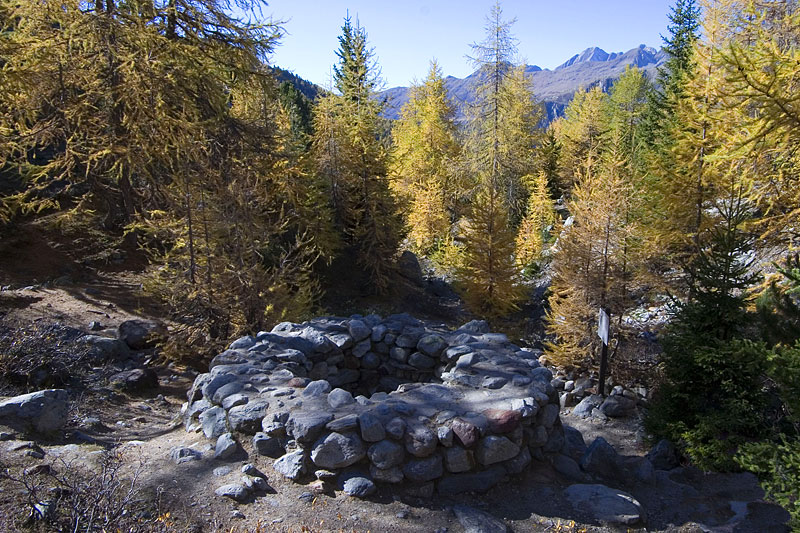 "Kalkofen" (lime kiln) near point 2051m. Limestone does not occur as bedrock in this area, but limestone erratics, transported here by the glacier from the Jungfrau area, were collected and used to stock the kiln (October 2006). | 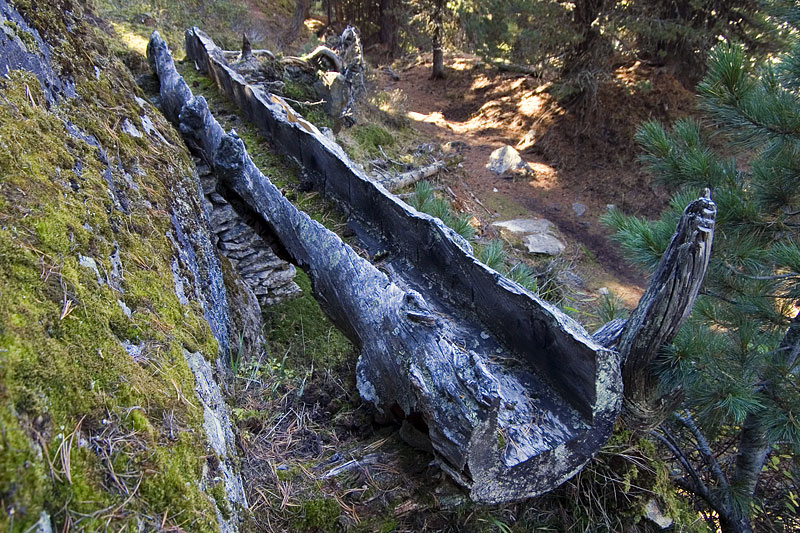 This wooden channel is part of an ancient irrigation system which was used to bring water to the pastures of Riederalp (September 2005). | 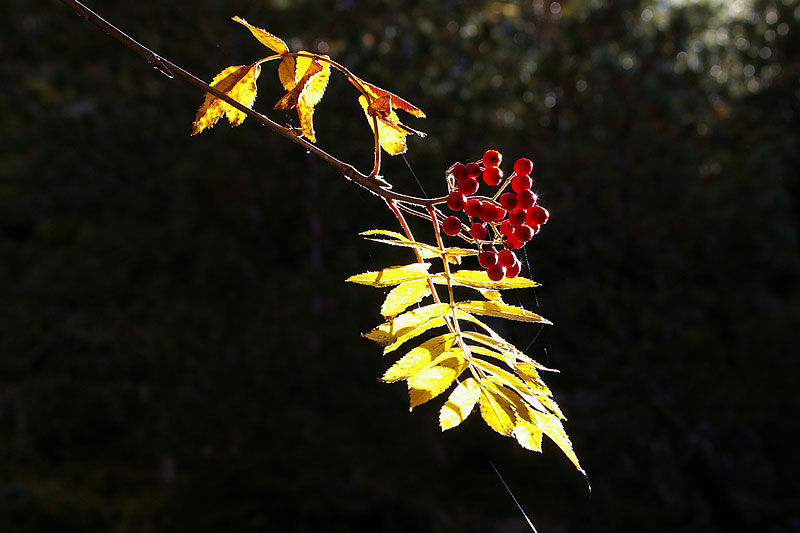 Fruit of the European Rowan (Sorbus aucuparia) and autumn-coloured leaves in Aletschwald. | 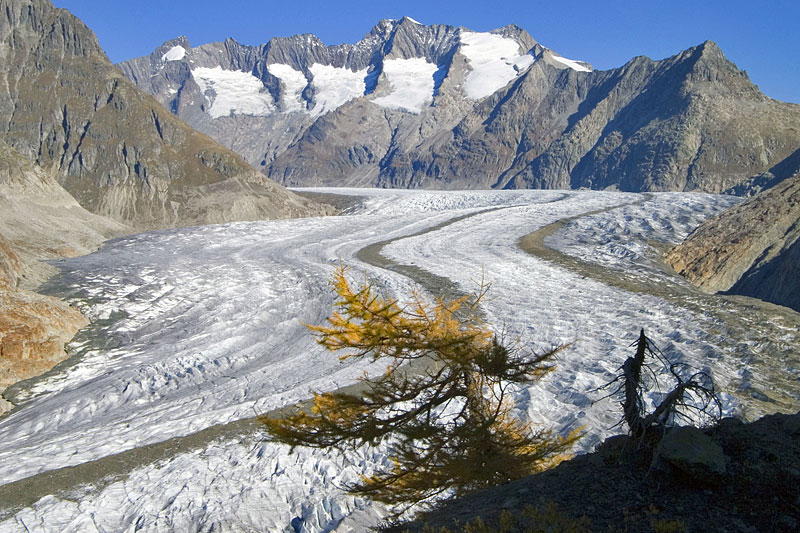 Two small larches have been struggling to survive in the high altitude climate near Grosser Aletschgletscher, one with more success than the other (October 2006). |
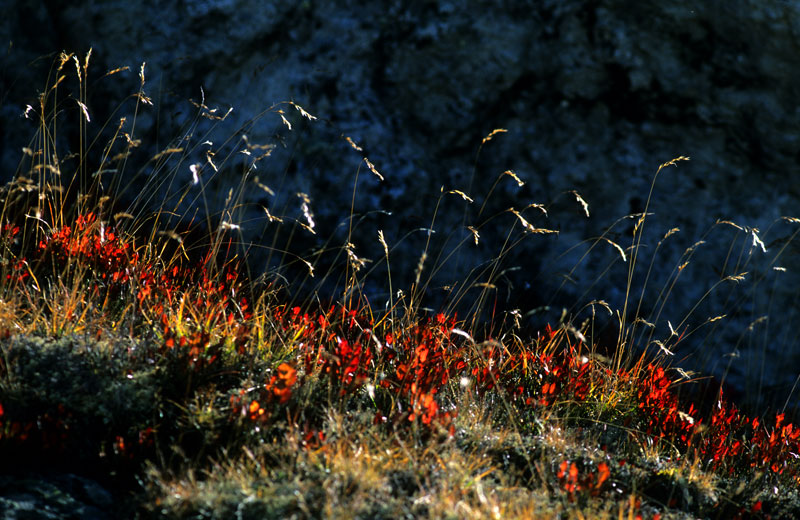 Red blueberry leaves and golden grasses (October 2006). | 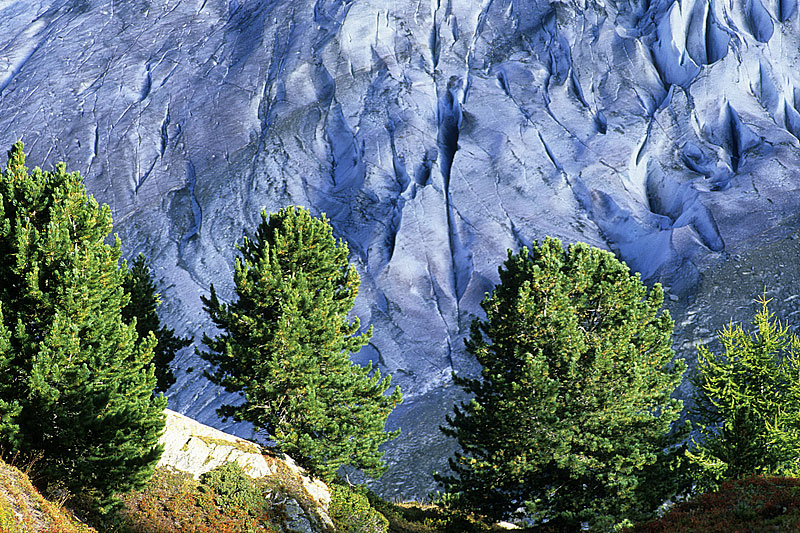 Swiss Pines and, on the right, a larch near the glacier margin (September 2005). | 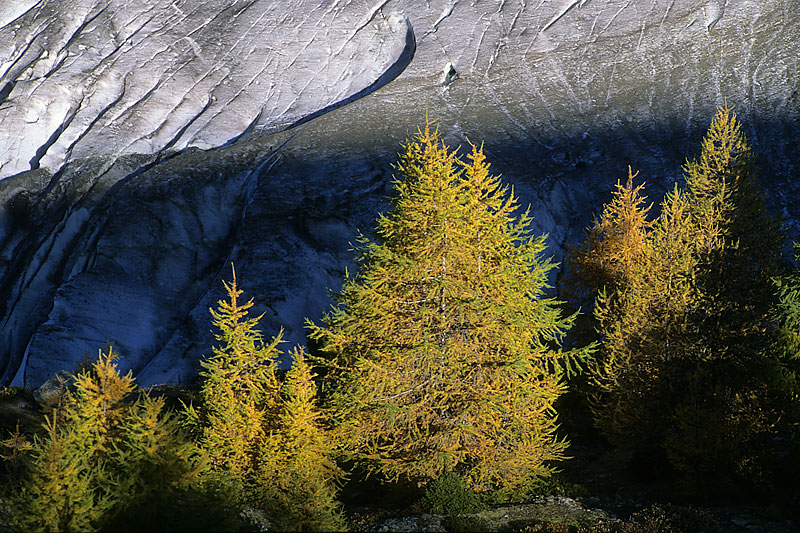 The early morning sun reaches golden larches and the glacier tongue (October 2006). | 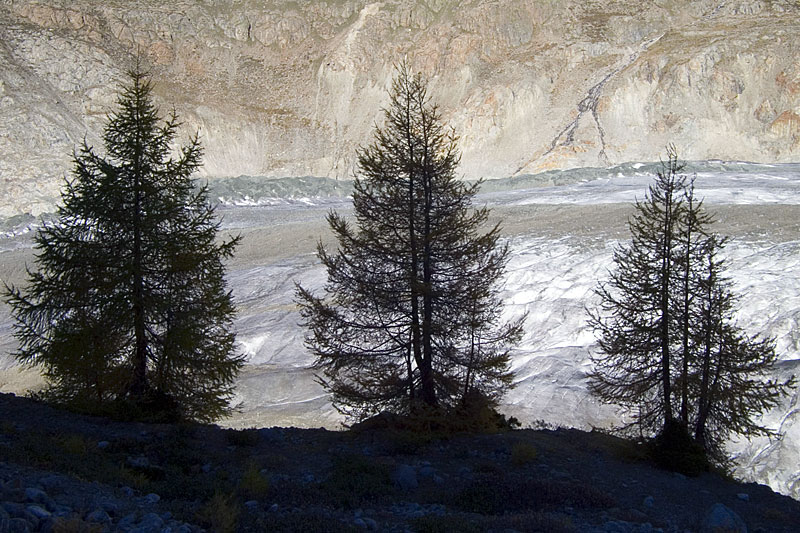 Silent sentinels of Grosser Aletschgletscher (October 2006). |